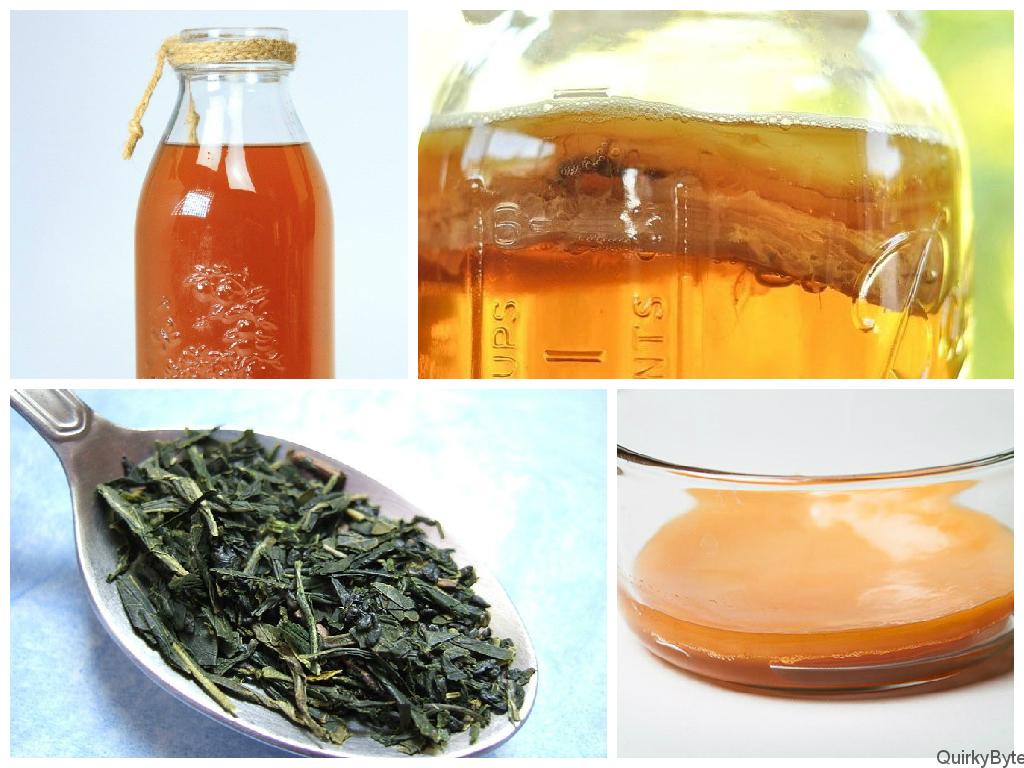No one can indicate the precise origins of the kombucha bacteria (or the kombucha mushroom) but it was surely used in the 220 BC during the Tsin dynasty. The tea made from the kombucha ferment has been appreciated for more than 2000 years and thanks to its miraculous effects on the body it was called “the tea of immortality” or the “elixir of life”. This type of tea was also brought in Russia and Japan and it seems that in this last location the tea was given the name of kombucha in 415 A.D. It is said that emperor Inyko got sick and was treated with kombucha by a doctor named Kombu and thus the name of tea was born.
The kombucha mushroom isn’t really a classic mushroom – it looks like an American pancake and it actually consists of an entire colony of 12 microorganism species. The colony itself comprises “friendly” bacteria and mushrooms that transform the environment they live in (preferably rich in sugar and black or green tea) in substances that help in boosting our health. As a reminder, replacing sugar with honey when preparing the special tea will only destroy your kombucha mushroom. Why? Because honey contains a natural antibiotic that will immediately attack the colonies of bacteria, which are biotic (or, more precisely, probiotic). You can add honey in the glass you drink the tea, but not in the container where you keep the mushroom. Moreover, it is best to consume the drink when its pH is below 4 (and thus, gains a bit of a sour taste).
During its fermenting process, the kombucha mushroom can produce a series of nutrients and vitamins, such as:
- A number of organic acids.
- Vitamins such as B1, B2, B3, B6, B12 (well-known for the benefits they bring upon the nervous system).
- Vitamin C (natural antioxidant and good for the immunity system), D (perfect for the bone structure), K (prevents severe bleeding).
- Minerals such as Iron, Magnesium, Potassium, Calcium etc.
- Amino acids, enzymes, and microorganisms that are probiotics.
Other benefits of the kombucha mushroom are:
- It protects the organism from stress.
- Increases the functionality of the liver.
- It boosts energy.
- It can cure metabolic health problems, allergies, and digestive problems.
- Strengthens the nails.
- It can be used for skin problems and even shampoo in order to strengthen the hair.
If you aren’t completely convinced, you can try it yourself and here’s a recipe you can use to prepare your own kombucha tea:
- 1 L of green tea (1 teaspoon of green tea for 1 L of water)
- 200 ml ferment (that contains the kombucha mushroom)
- 80 gr of sugar.
Preparation
- Put 1 liter of water to boil and when it has reached the boiling point, stop the stove and put 1 teaspoon of green tea, then cover the pot and let the green tea infuse for 15 minutes.
- Filter the tea and then add up the sugar while stirring vigorously in order for the sugar to totally dissolve.
- Leave the tea to cool up to 20-25oC (you can use a kitchen thermometer but normally, if you dip your finger into the tea and it doesn’t hurt, it’s good to go).
- Then you can pour the tea into the storage glass vessel and mix up with the 200 ml liquid that contains the kombucha mushroom.
- cover up the container with a cloth (as the ferment needs to “breath”); don’t seal with a cap.
- Leave it to ferment for 3-4 days and then extract the mushroom with 200 ml liquid and deposit it in another container for a future tea preparation and the rest is for you to serve.
Other recommendations:
- Don’t use metal spoons or other kitchen utensils with the kombucha ferment.
- The kombucha mushroom can be used for 3-4 times then you have to extract ferment without the mushroom and leave it to form (it will easily “bread”)
